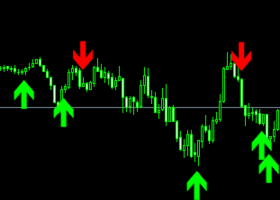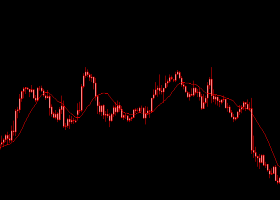
BOE Rate Decision, Quarterly Inflation Report and Monetary Policy Summary
BOE Rate Decision, February Quarterly Inflation Report (QIR) and Minutes will be released today at 12:00pm GMT. There is no expected change in regards to interest rates, so the initial reaction will come from any surprises in the vote count.
If Ian McCafferty reverses his vote for a rate hike, changing the tally back to nine-nil will see the GBP pressured. This will be the first thing to watch for as some analysts have speculated that McCafferty may choose to change his stance at this meeting. We don’t see a reason for that to happen at this particular meeting considering the recent better-than-expected CPI and Employment data, however, since we are not privy to all the information presented in the meeting, including the most recent OIR, we cannot rule it out. The addition of the Quarterly Inflation Report makes this event more volatile, and the contents of that report, along with the Monetary Policy Summary will dictate the direction of the GBP.
Description: As of August 2015, the BOE release their Monetary Policy Committee Meeting Minutes and their Official Bank Rate decision at the same time. The minutes contain the interest rate and asset purchase vote for each of the nine MPC members during the most recent meeting. The breakdown of votes provides insight into which members are changing their stance and how close the committee is to enacting a change in monetary policy. This vote is reported in an X-X-X format; the first number is MPC members who want to raise rates, second to cut rates, third to keep on hold. The BOE release the MPC Rate Statement only when they have changed the OBR, therefore there will usually be no MPC Rate Statement released.
The BOE now also release a Monetary Policy Summary which contains the outcome of their vote on interest rates and other policy measures, along with commentary about the economic conditions that influenced their votes. Most importantly, it discusses the economic outlook and offers clues on the outcome of future votes.
On a quarterly basis the BOE also release their Quarterly Inflation Report alongside the aforementioned releases. The QIR includes the BOE’s projection for inflation and economic growth over the next 2 years. The BOE Governor also holds a press conference to discuss the report’s contents after release. The QIR provides valuable insight into the bank’s view of economic conditions and inflation; these are the key factors that will shape the future of monetary policy and influence their interest rate decisions.
Summary: The BOE still plans to hike rates in late 2016 or early 2017, and this gives the currency strength fundamentally, however, the BOE cannot hike rates until they see inflation moving higher, towards the 2% target. Until this occurs, rate hikes will continue to be delayed. Global uncertainty stemming from China, the continued fall in commodity prices and increasing talk regarding the UK’s EU referendum have continued to weigh on GBP. Given the UK’s low inflation and Core CPI sitting only slightly above 1%, combined with the dovish MPC and the market pushing back expectations of a rate increase, we see GBP as a weak bullish currency rather than a wholly bullish one. This will remain the case until we see a noticeable move higher in CPI, or a strong upwards trend in average earnings. In the short term the GBP has the potential to weaken further as the market reprices BOE expectations.
The sterling has seen weakness in recent months as expectations of a rate hike get pushed out further into the future due to low inflation, and uncertainty about the relationship between the UK and EU. This quarterly event coined “Super Thursday”, due to the inclusion of the Quarterly Inflation Report, is the best gauge of the BOE’s stance on inflation, the economy, and interest rate levels moving forward.


